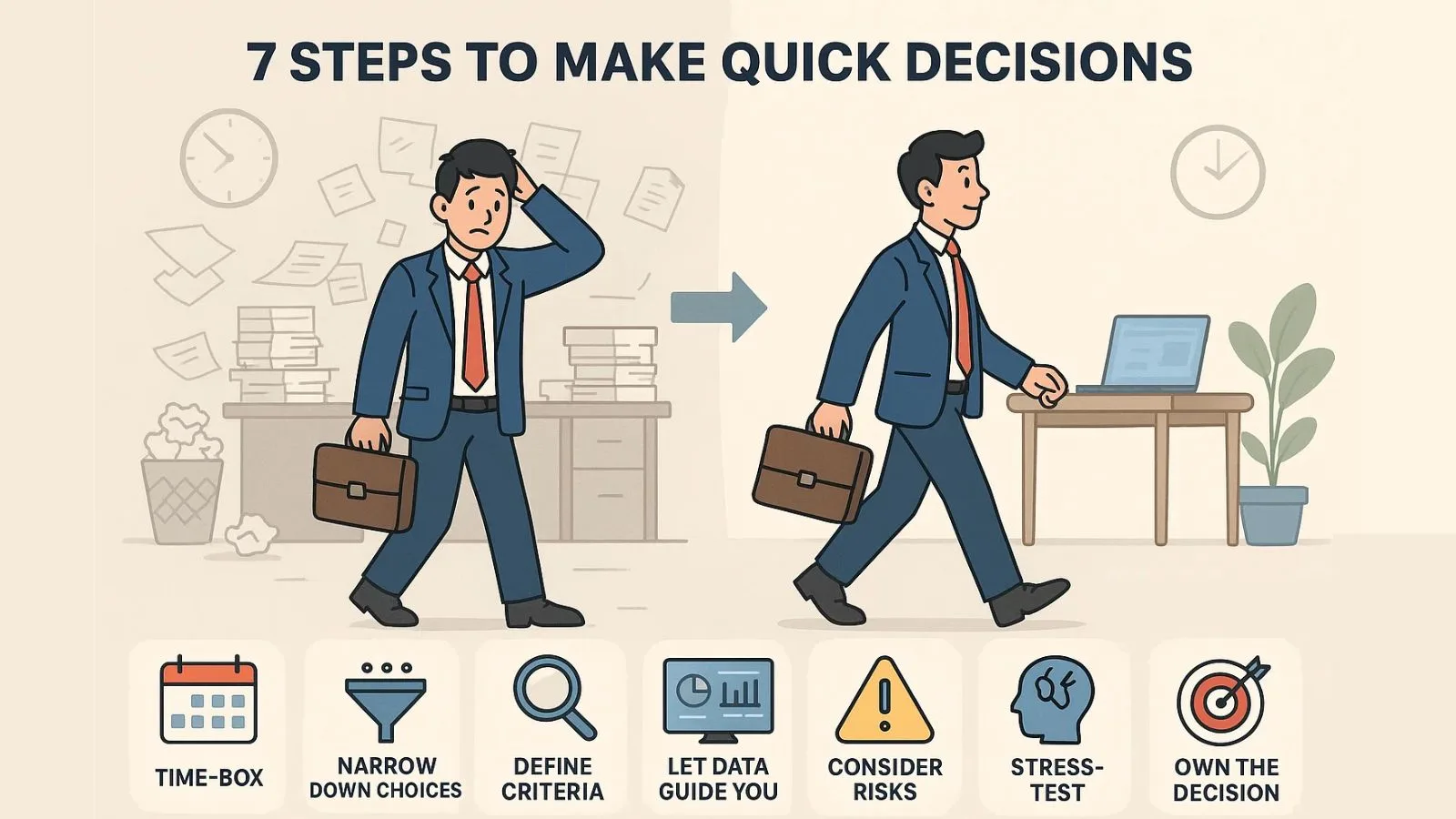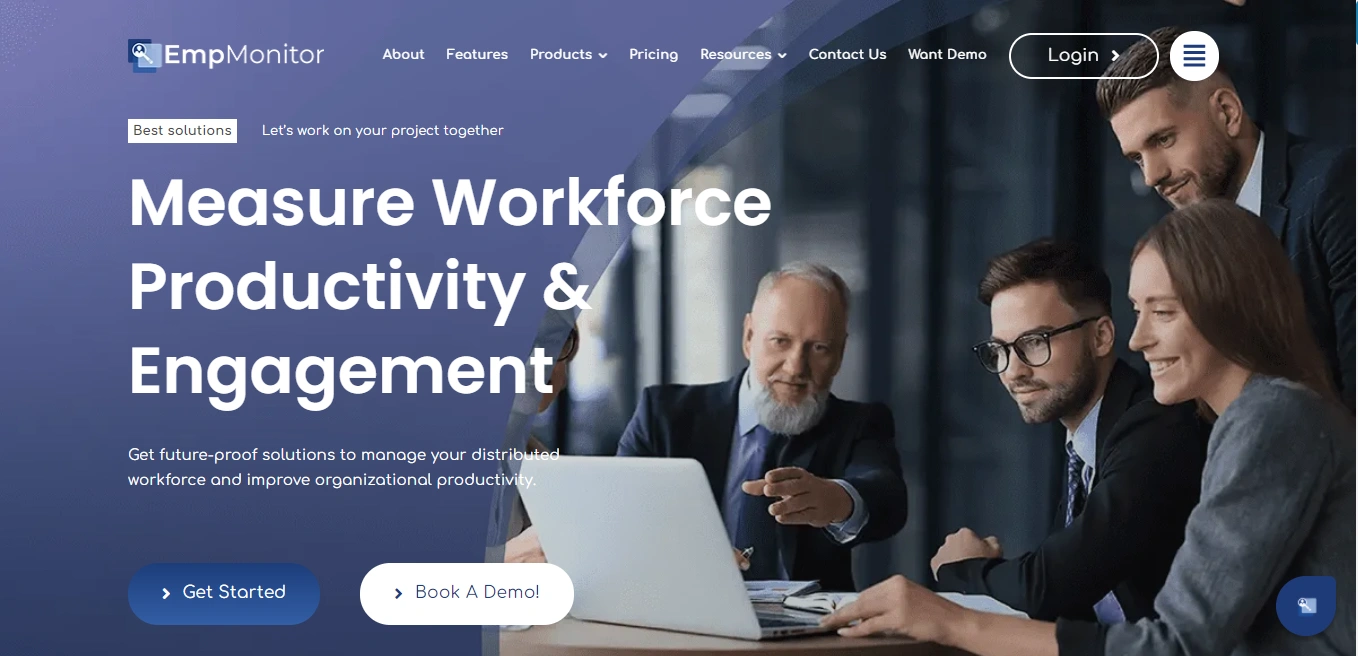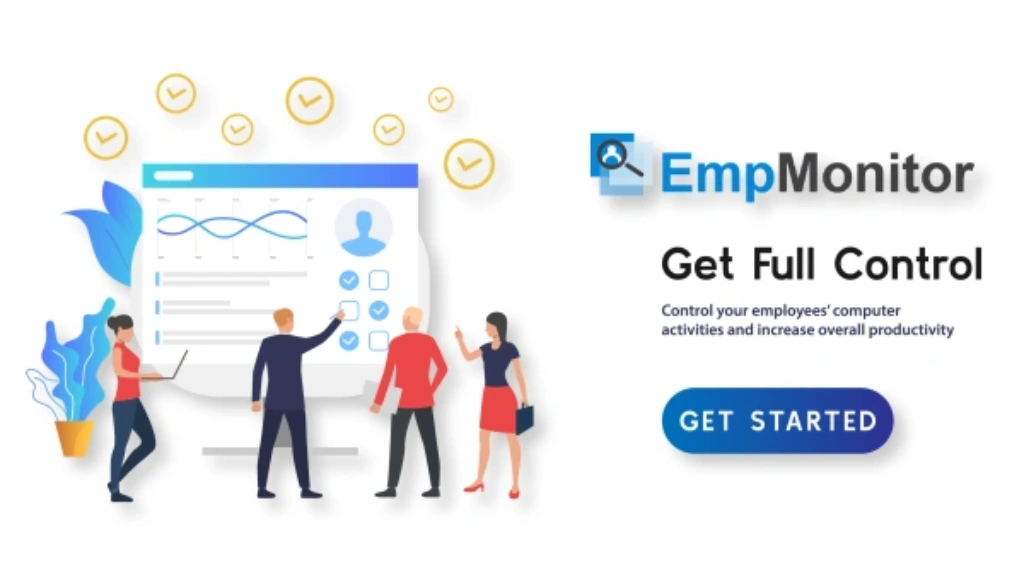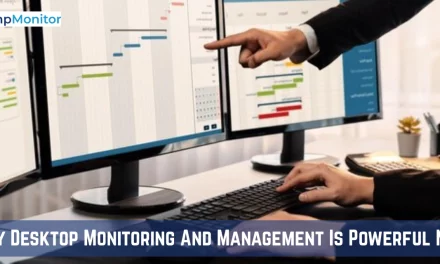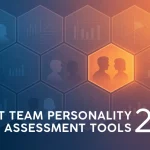Have you ever spent hours comparing different tools, strategies, or processes, only to end up not deciding at all? That frustrating freeze is more common than you think, especially in the fast-paced world of employee management. It’s called analysis paralysis, and it’s one of the biggest silent productivity killers in the workplace.
In this digital age, managers are bombarded with endless options, whether it’s choosing the right performance metrics, evaluating monitoring tools, or setting up workforce policies.
The more choices we have, the harder it becomes to move forward. Instead of empowering us, information overload can trap us in a cycle of overthinking, delays, and second-guessing.
This phenomenon, also known as paralysis by analysis, not only slows down decision-making but can also impact team morale, efficiency, and business growth. When managers are stuck, so is the rest of the team.
In this blog, we’ll explore what causes analysis paralysis in employee management, how to recognize it, and, most importantly, how to overcome it with practical strategies and smart tools.
By the end, you’ll know how to shift from hesitation to action, and we’ll also introduce a powerful solution that can help you make better, faster decisions with confidence.
Listen To The Podcast Now!!
What Is Analysis Paralysis?
We’ve all had those moments, staring at the screen, comparing options, going back and forth, yet still unable to make a decision
That mental gridlock? It’s called analysis paralysis.
In simple terms, analysis paralysis happens when you’re faced with too many choices, and the decision-making process becomes so overwhelming that you don’t take any action at all.
The desire to make the “perfect” decision often ends up delaying progress altogether.
This challenge shows up frequently in Employee Evaluations. Whether you’re selecting a new tool, organizing workflows, or reviewing policies, the sheer number of possibilities can become more stressful than helpful.
One moment you’re comparing features, the next you’re lost in data, yet no closer to a clear decision. At its core, analysis paralysis stems from the fear of making the wrong move.
And while careful planning is valuable, overanalyzing every detail can lead to missed timelines, slow implementation, and unclear direction.
These delays can also affect your team. When decisions stall at the top, it creates uncertainty at every level, leading to confusion, disengagement, and reduced momentum.
Recognizing when you’re stuck in this loop is key. From there, shifting toward small, deliberate steps can help break the cycle, allowing you to move forward with clarity and confidence.
Signs You’re Facing Analysis Paralysis In Employee Management:
Managing a team comes with constant decisions, new tools to explore, data to analyze, and processes to fine-tune.
But if you find yourself overthinking every choice or stuck endlessly comparing options, you may be experiencing analysis paralysis.
A typical example? Spending hours researching employee management software, reviewing every feature, and watching multiple demo videos,
Only to feel more uncertain than when you began. It may seem productive, but it often results in delays and inaction.
Another common scenario is meetings that revisit the same topics repeatedly.
If conversations around performance tracking or scheduling have happened several times without a clear outcome, it’s likely not about being thorough; it’s indecision taking over.
Sometimes, it’s less obvious. You may have access to all the reports and dashboards you need, yet making a move still feels overwhelming.
Waiting for the “perfect” answer can quietly stall progress.
And when decisions around promotions, onboarding tools, or policy changes keep getting postponed out of fear of choosing the wrong path,
The impact goes beyond just one person; it affects the team’s momentum and morale.
Identifying these patterns is the first step toward change. From there, shifting focus from perfection to progress allows you to lead with clarity and confidence,
Creating space for smarter decisions and a more engaged team.
Why Analysis Paralysis Is Dangerous For Workforce Management?
Have you ever stared at a screen, comparing five different tools or second-guessing a simple scheduling decision, only to realize hours have passed and nothing’s been done?
That’s analysis paralysis in action. It sneaks up on teams, especially in workforce leadership, where every choice feels like it could make or break Unleash Productivity.
The danger isn’t just the delay; it’s the ripple effect. When decisions stall, tasks back up, employees are left waiting for direction, and trust in leadership quietly erodes.
People start filling in gaps themselves, which can lead to misalignment or missed goals.
This is where smart support systems come in. With reliable workforce management software, managers get clarity fast.
Instead of juggling spreadsheets or flipping between dashboards, you have everything in one place: schedules, productivity insights, and attendance data, making decisions feel less like a burden and more like progress.
In short, analysis paralysis doesn’t look like a crisis, but over time, it builds one. And in team management, momentum matters.
Taking action, even small, confident steps, keeps the workplace flowing and your people focused.
Also Read:
Top 5 Important Employee Evaluation Examples You Must Know
Unleash Productivity With Time Track Software
How To Overcome Analysis Paralysis? 7 Actionable Strategies:
Making decisions in employee management can often feel overwhelming, especially when every option seems equally good (or bad).
This mental halt is known as analysis paralysis, a common problem that silently eats away at productivity, momentum, and team morale.
So, how do you move forward when your brain wants to evaluate just one more thing?
These seven strategies will help you break the cycle and start making confident, informed choices again.
1. Define Your Decision Criteria Early
Before diving into any evaluation, set your must-haves. Are you looking for better employee insights, real-time performance tracking, or easy integration?
Define what matters most before you explore options. This limits distractions and prevents the classic paralysis analysis that comes from comparing endless tools and features.
2. Narrow Down to 3 Choices Max
More options, more confusion. Limit your shortlist to 2–3 top-performing tools or processes. It keeps you focused and reduces the emotional weight of choosing “wrong.”
This is especially important when evaluating employee management software, where dozens of platforms can quickly become noise.
3. Use the 80/20 Rule
Don’t wait for perfection. Often, 80% of your outcome will come from just 20% of the right decision.
Instead of obsessing over every small detail, choose the tool or process that checks the most boxes and move forward.
4. Involve the Right People, Not Everyone
Too many opinions can stall momentum. Limit decision-making input to those directly impacted by the outcome.
In team management scenarios, that might be HR leads or direct supervisors, not the entire department.
5. Time-Box Your Decision Window
Give yourself a deadline to decide. Whether it’s 48 hours or one week, a time limit creates urgency and stops you from falling into an endless loop of overthinking.
If you’re wondering how to stop analysis paralysis, time constraints are one of the most effective solutions.
6. Test Before You Scale
Not sure about committing?
Try before you buy. This is where tools like EmpMonitor shine. It’s a lightweight, easy-to-deploy employee management software that you can trial in a small team before full-scale implementation.
This eliminates decision stress and lets you validate the choice with real-world results.
7. Let Data Be Your Guide
When emotions cloud decisions, data brings clarity. Choose solutions that offer real-time insights, productivity reports, and activity logs.
Data doesn’t lie, and it removes the guesswork from managing people and processes.
Overcoming analysis paralysis isn’t about becoming fearless; it’s about putting simple systems in place that make smart decisions easier.
Whether you’re choosing a new HR tool, refining workflows, or deciding how to monitor team performance, these strategies will help you move from hesitation to confident action.
And remember: small steps still move you forward. Start with a lightweight solution, test it, analyze results, and build from there.
Empower your team and yourself with clarity, not overthinking.
How Monitoring Employees Helps You Beat Analysis Paralysis?
When you’re overwhelmed by too many tools and unsure which direction to take in managing your team, it’s easy to fall into analysis paralysis.
This mental block often stems from excessive decision-making pressure, especially when you’re trying to balance performance tracking, productivity, and accountability all at once.
That’s where EmpMonitor steps in. Instead of complicating your decision with endless dashboards or steep learning curves, EmpMonitor simplifies the way you manage your team by providing clarity, structure, and data-driven insights.
As a powerful employee monitoring software, EmpMonitor is built to take the guesswork out of workforce management.
It gives you the right information at the right time, so you can make smarter, faster decisions without overthinking every step.
Here are some of EmpMonitor’s standout features that help reduce confusion and restore control:
Key Features of EmpMonitor:
1. Real-Time Activity Tracking
Monitor user activity across apps, websites, and devices to understand productivity patterns clearly.
2. Automated Attendance & Time Tracking
No manual input needed. Track log-in/log-out times and break durations automatically.
3. Productivity Reports & Visual Dashboards
Get concise reports that highlight top performers, idle time, and more, without digging through data.
4. Stealth Mode Operation
Monitor discreetly, ensuring team behavior remains unaffected by monitoring practices.
5. Remote Employee Monitoring
Perfect for hybrid or remote teams, keep everyone aligned regardless of location.
By providing these capabilities in one platform, EmpMonitor reduces your reliance on multiple tools and cuts down the mental friction that leads to analysis paralysis.
When you have clean, visual data at your fingertips, you don’t need to second-guess every management choice; you act with confidence.
Whether you’re managing a remote team or scaling operations, EmpMonitor helps you stay in control while avoiding the trap of overthinking.
Final Thoughts:
Struggling with analysis paralysis is more common than you think, especially when managing teams and making decisions that impact daily operations.
It’s easy to get caught up in endless choices, but staying stuck isn’t an option.
If you’re trying to figure out how to overcome analysis paralysis, start by focusing on clarity and simplicity.
You don’t need dozens of dashboards or complicated comparisons; you need one reliable tool that helps you take action without second-guessing.
That’s where EmpMonitor comes in. Designed to support smarter employee management, it gives you the visibility and insights you need to move forward with confidence.
No confusion. No overwhelm. Just better decisions, faster.
Ready to stop overthinking and start leading?
Give EmpMonitor a try and let progress speak for itself.
FAQ’s (About Analysis Paralysis In Employee Management)
Q1. What is analysis paralysis in employee management?
Analysis paralysis, also called paralysis by analysis, occurs when overthinking leads to decision delays.
In employee management, this might look like endlessly comparing policies, delaying software adoption, or hesitating to take action, which can hurt team productivity.
Q2. What causes analysis paralysis in the workplace?
The main causes are information overload, fear of making the wrong choice, and having too many options.
For example, choosing between various employee management software and workforce management tools can overwhelm even experienced managers.
Q3. How to overcome analysis paralysis in employee-related decisions?
Limit your options, set clear goals, and apply time limits to decisions. Using tools that provide real-time data, like employee monitoring software, helps remove guesswork and lets you act based on insights, not assumptions.
Q4. What is the difference between analysis paralysis and thoughtful decision-making?
Thoughtful decision-making involves structured, time-bound planning. Analysis paralysis is when thinking becomes a barrier to action.
The goal is to make informed choices without getting stuck in endless evaluation.
Q5. Can EmpMonitor help reduce analysis paralysis in team management?
Yes. EmpMonitor simplifies decisions by giving you a clear view of employee activity, productivity trends, and attendance data.
It reduces the need for micromanagement and speeds up team-related decisions, all within one smart dashboard.





